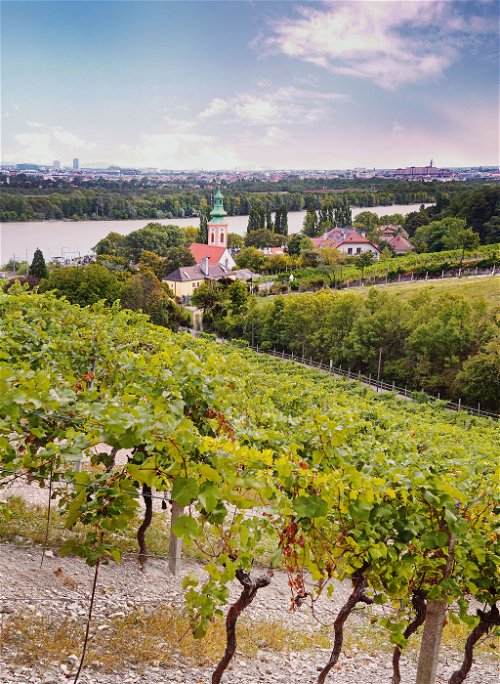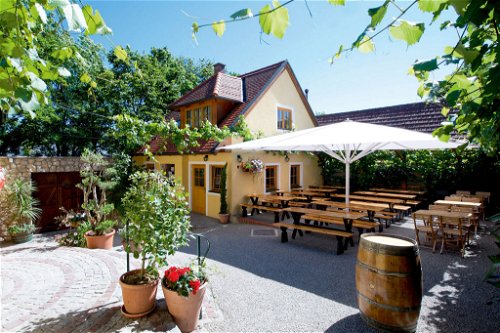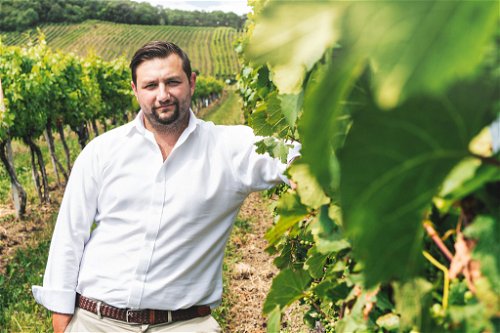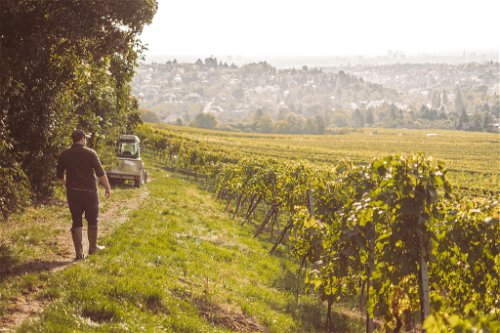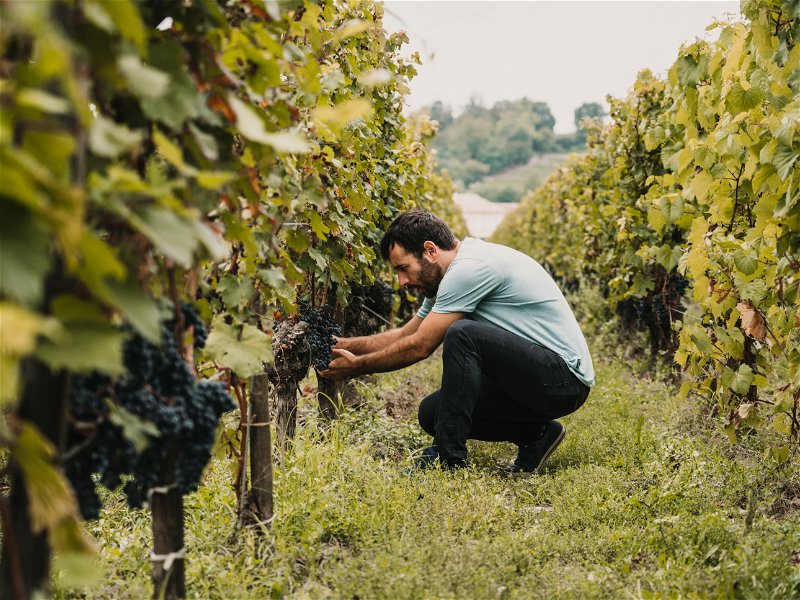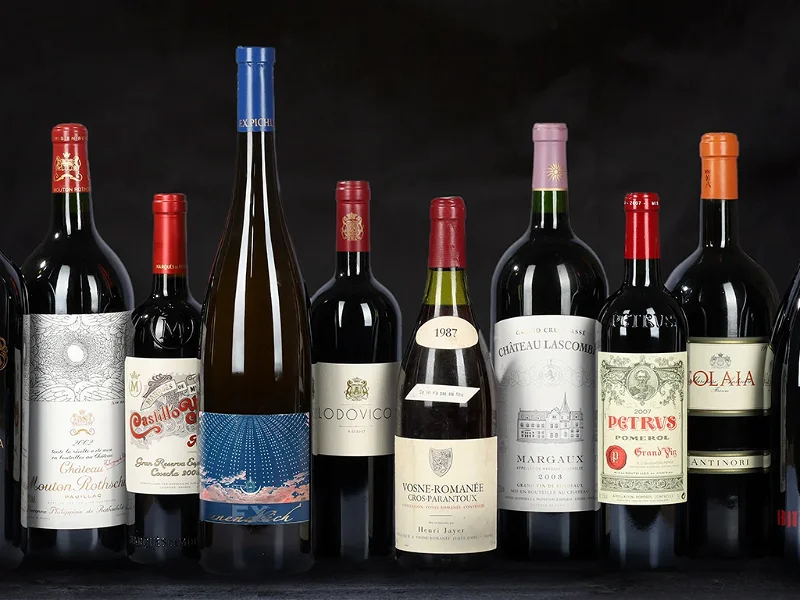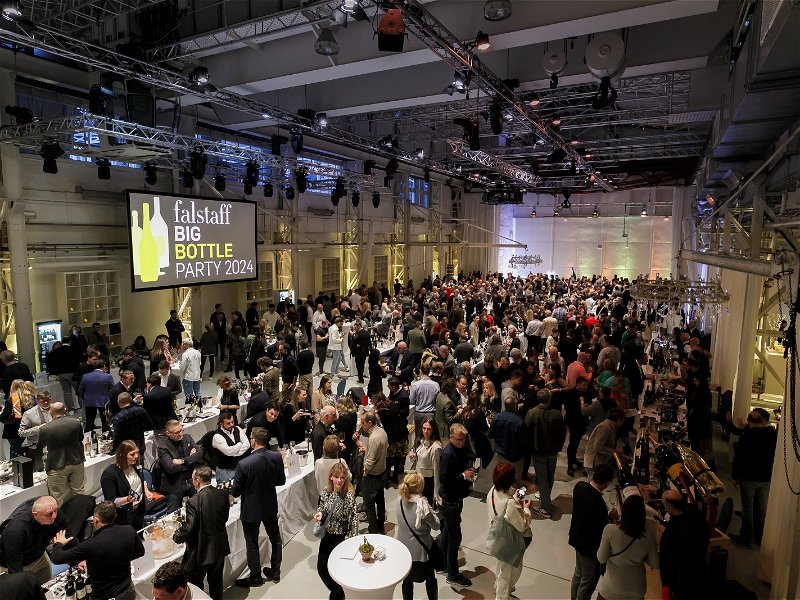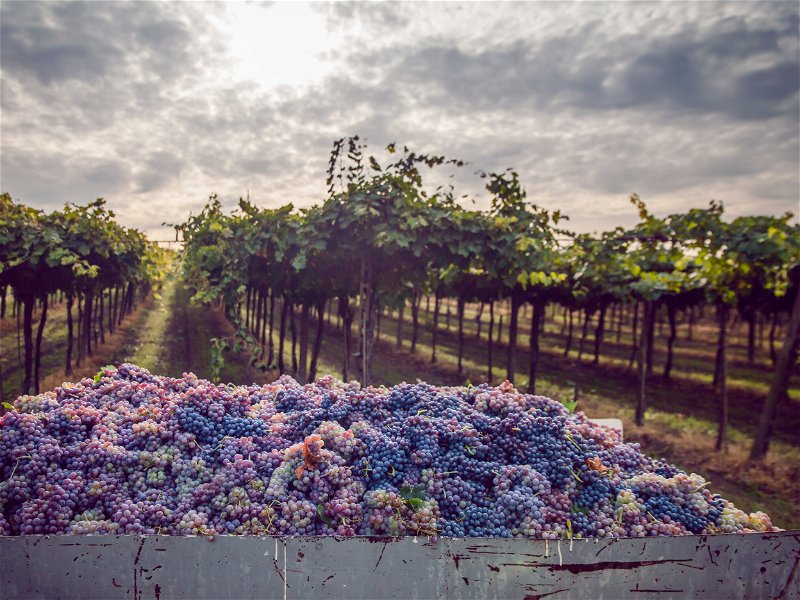Wine and the city: why Viennese viticulture is so special
Vienna and wine are inseparable. The city can look back on a long wine-growing tradition and is one of the few major cities in the world that not only has significant vineyards, but is also a veritable wine-growing region. Today, white and red wines of international quality are grown in Vienna – and are in great demand.
Was it the Romans who once brought wine culture to Vindobona? Or is viticulture here even older? We don't know for sure. What is certain is that the cultivation of the vine has a tradition of over 2,000 years in the region and the development of the town is closely linked to wine as a commercial and luxury good.
This is not least thanks to the Heurigen, where more than half of Vienna's winegrowers market their wine. This culinary institution dates back to a decree issued by Emperor Joseph II in 1784. At that time, he gave "everyone the freedom to sell and serve the food, wine and fruit must they produce at any time of the year, whenever and at whatever price they want". The reason for this: unlike today, Viennese water was often undrinkable, making wine a staple food for the Viennese population. The wine taverns were also intended to help break the dominance of the church in wine sales, which was a thorn in the side of the emperor.
To this day, more than two thirds of Viennese wine is sold via this marketing channel. While there were still more than 500 genuine Viennese wine taverns in the post-war period, there are now between 80 and 90 winegrowers who are allowed to display the "Föhrenbuschen" and exclusively offer their own wines. Incidentally, the term "Heuriger" has two meanings: in addition to the Buschenschank itself, it refers to the young wine, which only becomes "old wine" from the Martini day following the harvest year, November 11, while the current young wine changes from "Staubigen" to "Heuriger".
Wine in Vienna
The current vineyards within the city limits of Vienna cover 582 hectares of vineyards in ten of the 23 municipal districts. The 19th district of Döbling on the right bank of the Danube with the large Nussberg vineyard has the largest share with around 275 hectares of vineyards. The wine-growing villages of Nussdorf, Heiligenstadt, Grinzing, Sievering and Neustift are located here. In second place on the left bank of the Danube is Floridsdorf, the 21st district, with 218 hectares in the large Bisamberg vineyard and the wine villages of Stammersdorf, Jedlersdorf and Strebersdorf. Smaller vineyards can be found in Liesing, the 23rd district, with the large Maurerberg vineyard covering 45 hectares, and in Favoriten, the 10th district, with 22 hectares on the Laaerberg. More or less small areas are also cultivated in Hernals, Ottakring, Währing, Donaustadt and even in Hietzing and the 1st district.
In terms of grape varieties, white wine is clearly in the lead: around 84 percent are white varieties and just 16 percent are red wines. The four most important white wine varieties are Grüner Veltliner, Riesling, Pinot Blanc and Chardonnay. And around 40 percent of Vienna's vineyards are planted in the traditional Gemischter Satz style.
Blauer Zweigelt dominates the red wine segment, followed by Pinot Noir and Merlot.
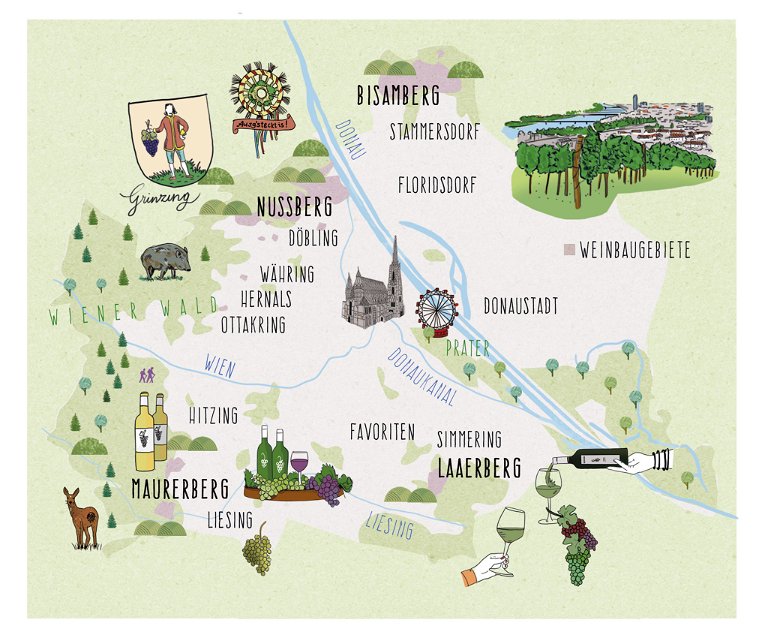
On average, Viennese winegrowers produce around 2.5 million litres per year, i.e. around one percent of the wine produced in the whole of Austria. The proportion of organic farming in Vienna's vineyards is remarkably high: currently, 23 percent of the land is certified organic - an international record.
The geology of Vienna's vineyards proves to be surprisingly diverse. In the north of the city, the vineyards lie on the bedrock of old mountain peaks, formed from flysch and marl as well as sediments from the old Vienna Basin. Here, the Danube has broken through the last eastern foothills of the Limestone Alps and separated the Bisamberg. Protected from the north-westerly bad weather currents, the vineyards of Döbling, Dornbach and Ottakring today extend on this partly calcareous, partly quartz-rich sandstone base. The subsoil of the vineyards in Mauer and Kalksburg to the south of the city is formed by limestone-rich sediments from the primeval Tethys Sea. Sandy, gravelly soils have also flowed in here from rivers in the Vienna Woods, some of which have solidified into conglomerates. The vineyards of Stammersdorf, Hungerberg and Oberlaa lie on terraces covered with gravel from the Urdonau. Sandy gravel or tar lies beneath the top layer of clay.
Built on solid ground
The Wiener Gemischter Satz has recently experienced an unexpected renaissance. It was awarded DAC status with the 2013 vintage; to the rank of a wine of provenance with protected origin. This has boosted demand for this typical Viennese speciality and brought this previously forgotten delicacy back into bloom. In contrast to a cuvée, where finished wines are blended, the Wiener Gemischter Satz is a white wine made from grapes of different varieties that have been planted in a mixed vineyard. These are grown, processed and developed together.
The historical background to this unusual approach: the winegrowers owned very small vineyards and wanted to make sure that they could produce a drinkable wine in the end. So they planted early and late ripening varieties and those with higher or lower sugar and acid yields to ensure a cross-section that regularly produced acceptable results.
A wide variety of grape varieties are used. The winemaker thus responds to the terroir and also controls the style and aroma of the wine through the weighting of the varieties used. The minimum requirement for a Wiener Gemischter Satz DAC is the planting of three white grape varieties, none of which may account for more than 50 percent of the vineyard, and the third largest share must be ten percent or more.
Internationally successful
In addition to the Wiener Gemischter Satz DAC, Vienna offers a wide range of single-varietal wines; the Nussberg in particular is legendary for its top Riesling quality. The Viennese vineyards also offer full-bodied white Burgundy from Chardonnay and Pinot Blanc, spicy Grüner Veltliner and fragrant Muscat. The red wines include Blauer Zweigelt, Pinot Noirs with a Burgundian character, complex Merlots and Cabernets, and even Syrah.
This diverse range in such a small area is what makes Viennese wine so special today. It is hardly surprising that the winegrowers have gradually succeeded in gracing the wine lists of upscale restaurants throughout Austria and the best restaurants in the world. Leading wineries in the city are already able to export up to 40 percent of their production .
One thing has not changed since the imperial era: Viennese wine is also a political issue. The Cobenzl winery, for example, has been run by the town itself for more than 100 years. The former mayor Michael Häupl even regularly swaggered about as the ambassador of Viennese wine himself. His phrase "Bring the Spritzwein", uttered during the first red-green coalition negotiations, has long since achieved cult status.
Don't miss out!
Sign up now for our newsletter.


